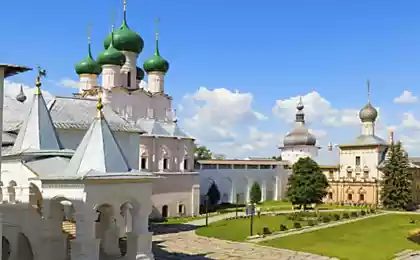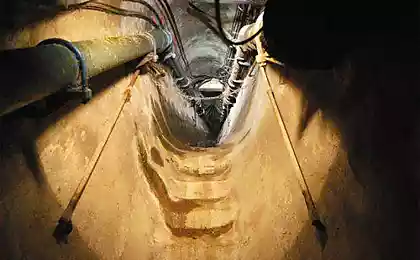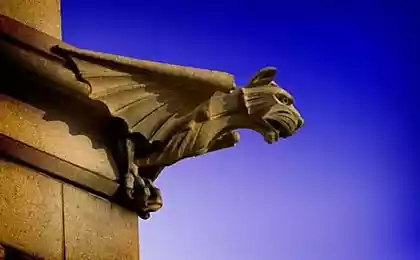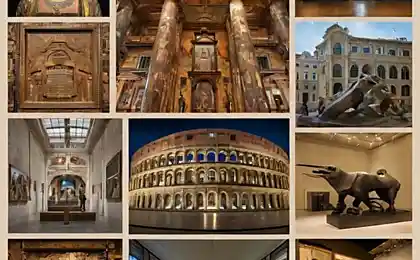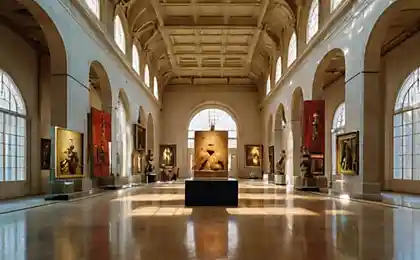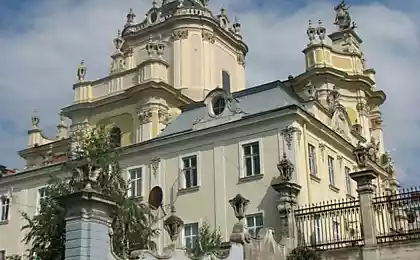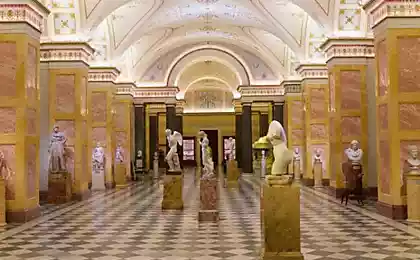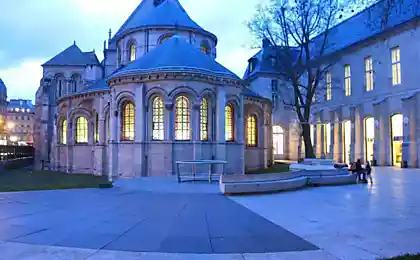1270
Petropalovsky Cathedral
Peter and Paul Cathedral was built in 1712-1733 under the project of Domenico Trezzini on the site of the wooden church that stood on this spot in the years 1703-1704. The bell tower of the cathedral is topped with a spire and has a total height of 122 meters, which allowed it to 2012 to be the tallest building in St. Petersburg. I suggest you take a tour of this magnificent construction and learn some interesting facts.
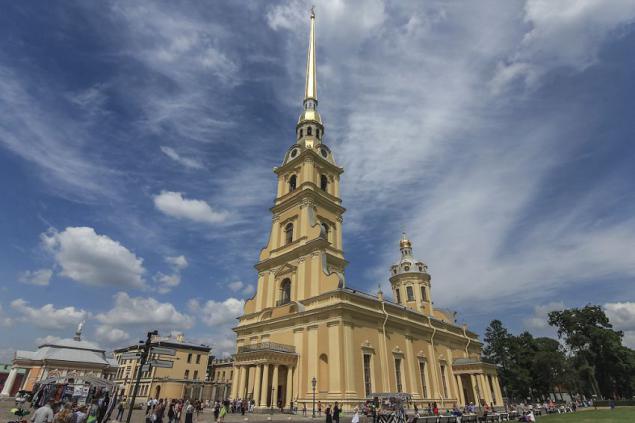
From the outset, the cathedral is the burial place of the Romanovs and their relatives. In 1896, the building was erected next to the tomb of the great princes of the imperial family, and His Serene Highness Prince Romanov. This from the cathedral eight graves were moved.
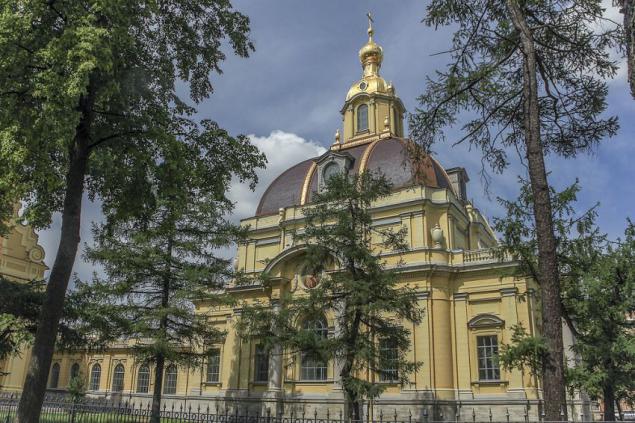
. Princely tomb was badly damaged during the Soviet era, many years repaired and is still closed to visitors.
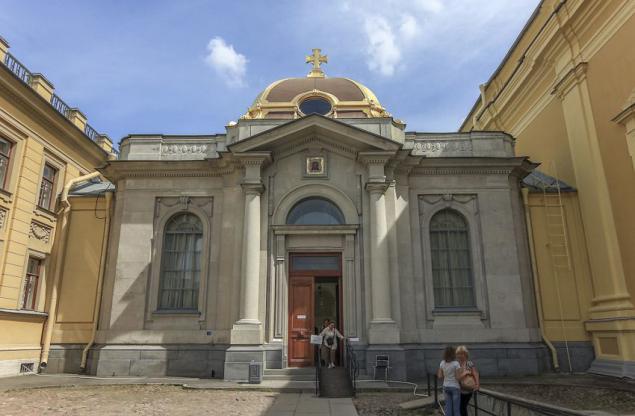
With its cathedral connects white corridor. As you can see, here everything is ready, but the passage is closed.
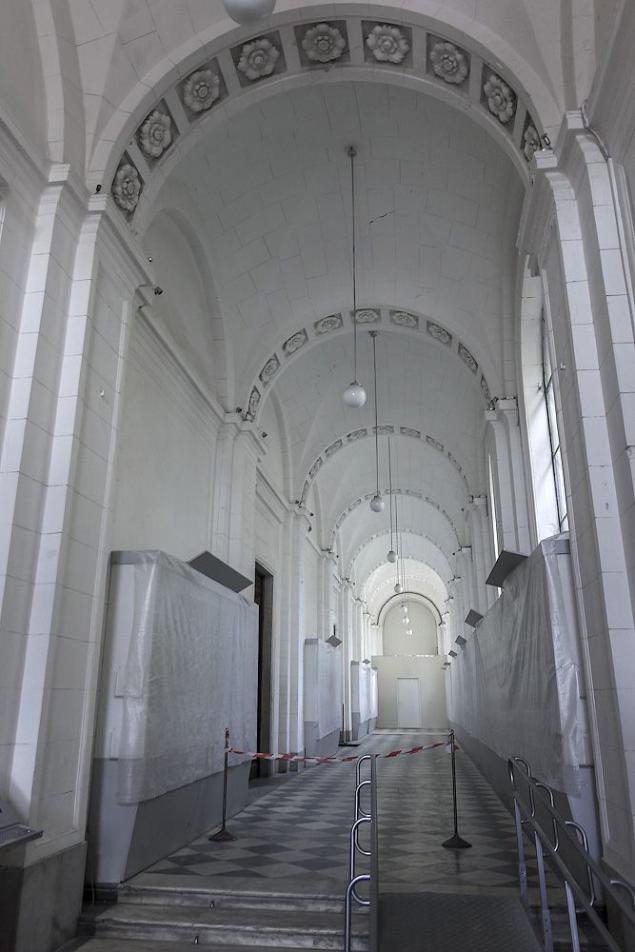
Will visit the interior of the nave of the cathedral.
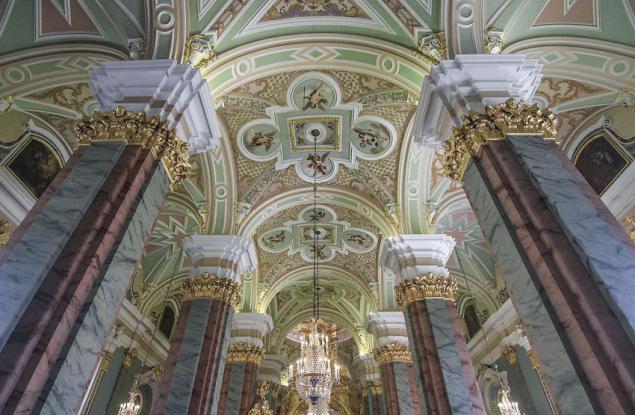
The main entrance to the temple from the Cathedral Square.
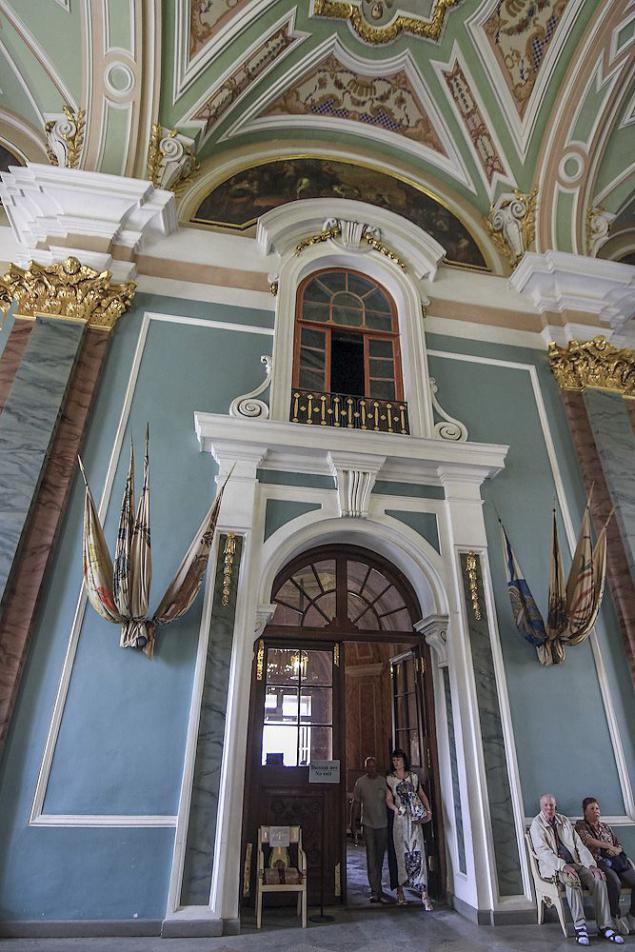
The ceiling is decorated with paintings from the Gospels.
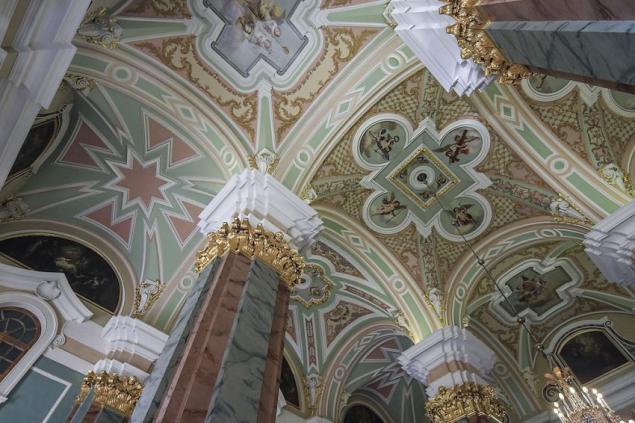
REDD suspended magnificent chandeliers.
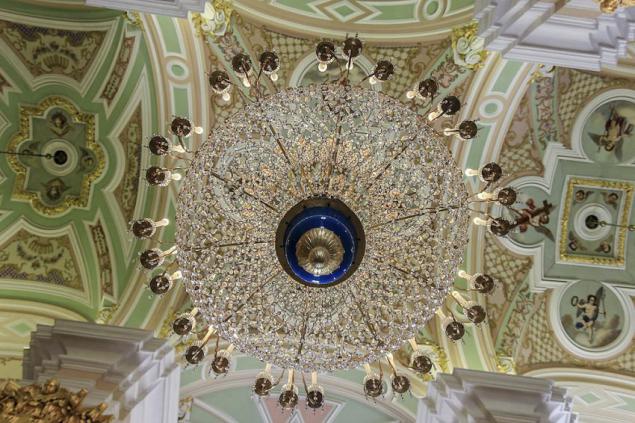
The pulpit, decorated with gilded sculpture.
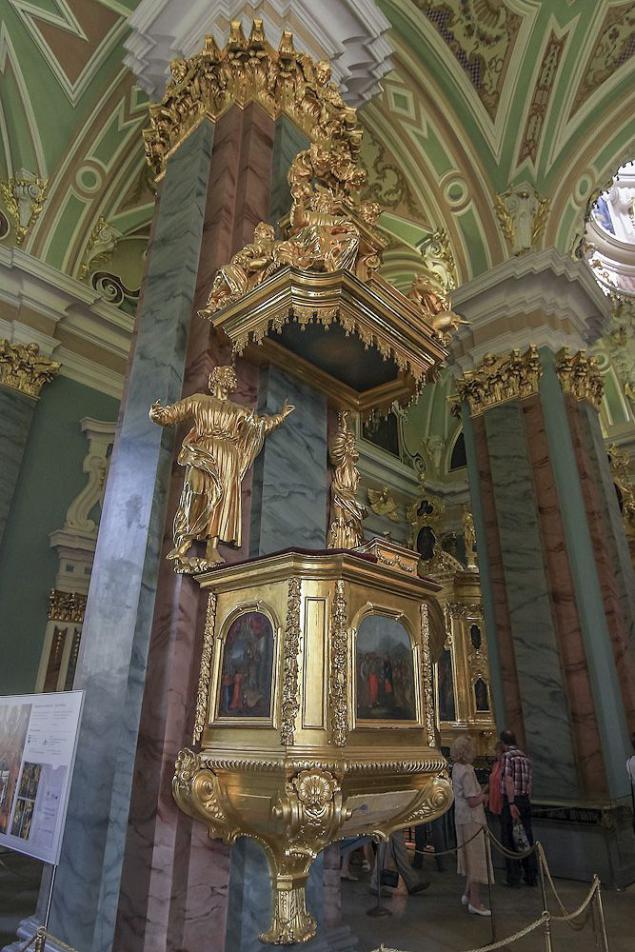
Gilded carved iconostasis of the cathedral in Moscow produced the drawings Trezzini.
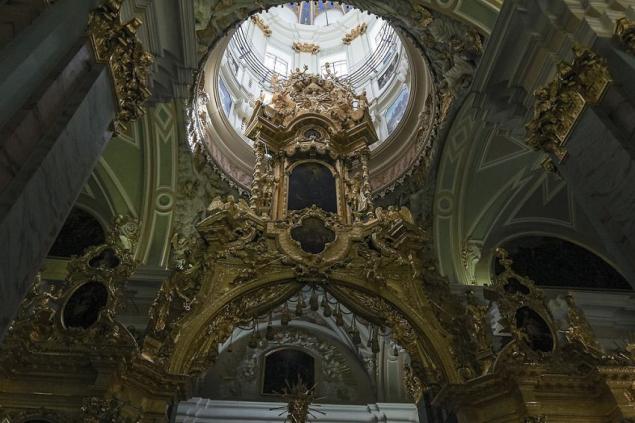
Before iconostasis are buried emperors and empresses of the XVIII century.
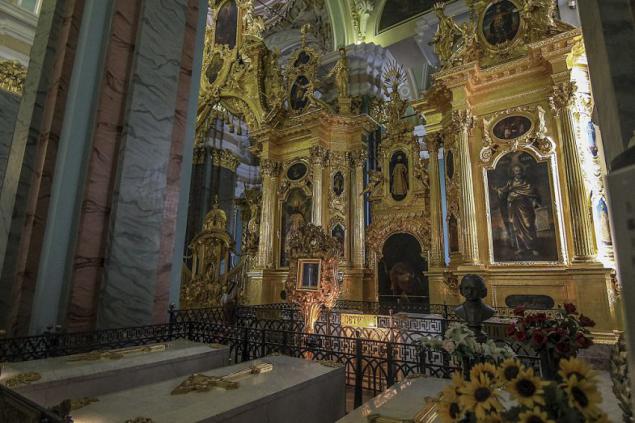
From left in the front row - the burial of Peter I, crowned by the bust of the king. Next to him - Catherine I (March Skavronskaya), his wife. Left - Elizabeth, their daughter, prudently titled plate "Elizabeth I» in case there would be empresses among other Elizabeth. For Peter I I am his niece Anna Ivanovna, the daughter of Tsar Ivan V. left in the second row - Catherine II and Peter III, moved after his wife died of Alexander Nevsky Lavra. On their tombstones is one and the same date of burial, which creates the illusion that they were living together and died in one day.
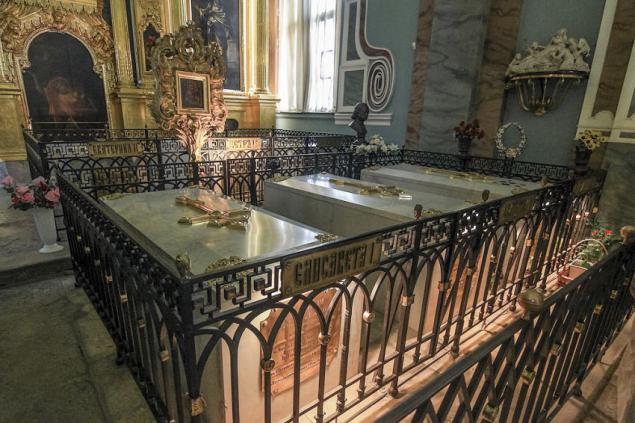
. Peter the Great signed on as the "Father of the Fatherland." When he died in 1725, the walls of the cathedral almost climbed the height of a man, and his body lay until 1731 in a temporary wooden chapel.
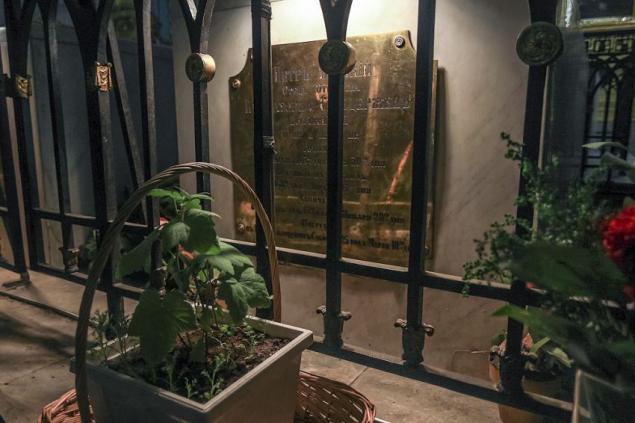
On the other side of the holy gates as two rows of tombstones are of Paul I and Maria Feodorovna, Alexander I and Elizabeth Alexeevna, Nicholas I and Alexandra Feodorovna, and the daughter of Peter I, Grand Duchess Anna.
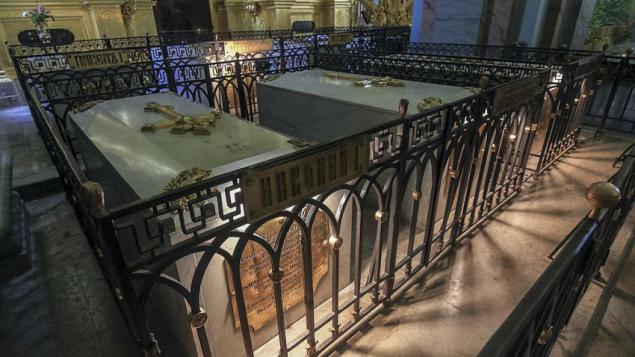
. All black tombstone fenced fences topped with knobs in the form of vases, covered with mourning cloth. Tombstones spouses delineated a single fence.
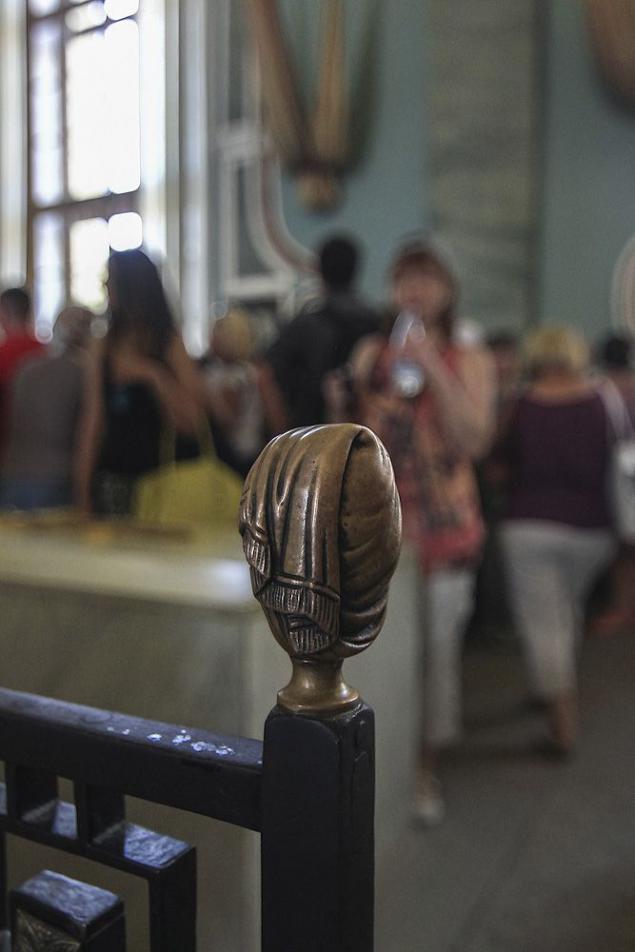
All the tombstones were in 1865 replaced by marble, and is now available, but the two are different from the rest of the sarcophagus. They were made in the years 1887-1906 of green jasper and pink rhodonite for Tsar Alexander II and his wife Maria Alexandrovna.
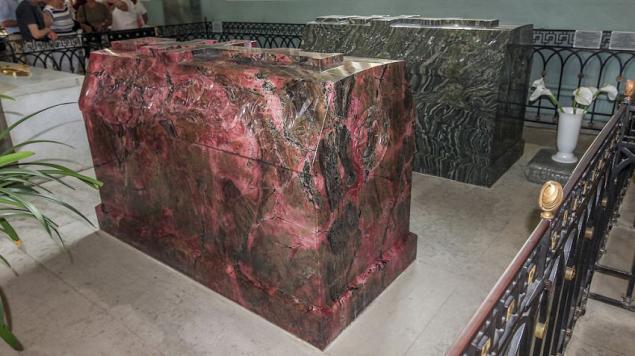
All marble tombstones covered with gilded crosses in the corners decorated with the imperial double-headed eagles. One of the other gravestones clearly fresh.
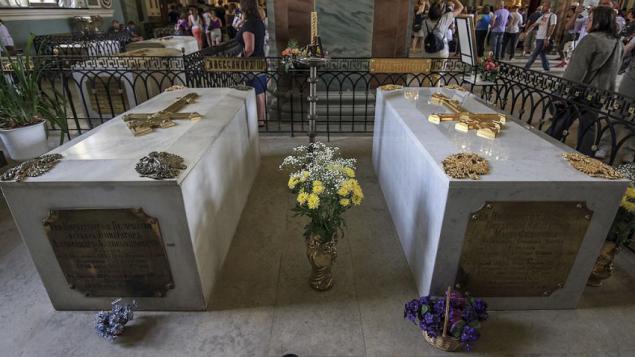
It is delivered over the burial of the Empress Maria Feodorovna (Princess Dagmar), the wife of Alexander III. Deceased in 1928, the empress was buried next to his parents in the crypt of the Cathedral of the Danish town of Roskilde. In 2006, her ashes were taken by ship to St. Petersburg and was buried next to her husband.
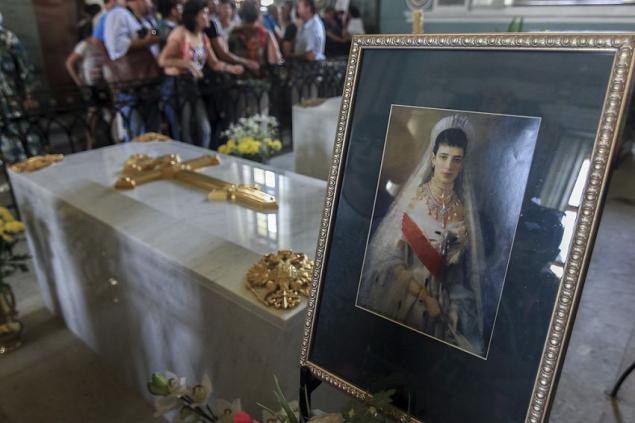
And in 1998, in the Cathedral of St. Catherine's chapel laid to rest the remains of the last emperor Nicholas II, Empress Alexandra Feodorovna and their daughters Tatiana, Olga and Anastasia.
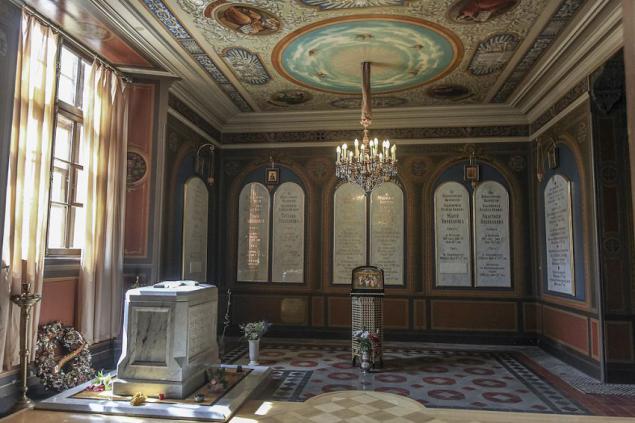
But the very first burial in the cathedral can be seen only on guided tours of the bell tower of the Cathedral, which had built during the life of Peter the Great. Here, under the stairs, are the graves of the princess Maria Alexeyevna, sister of Peter I, and his son Alexei Petrovich with his wife, Princess Charlotte Christine of Brunswick-Lüneburg Sophia.
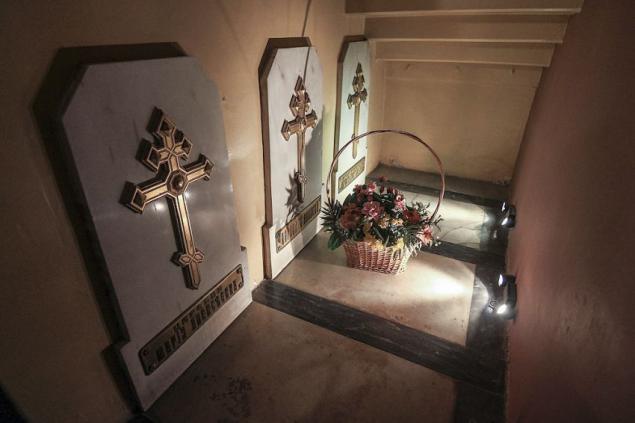
By peeling off the stairs rise to the lower level of the bell tower, located flush with the roof of the cathedral.
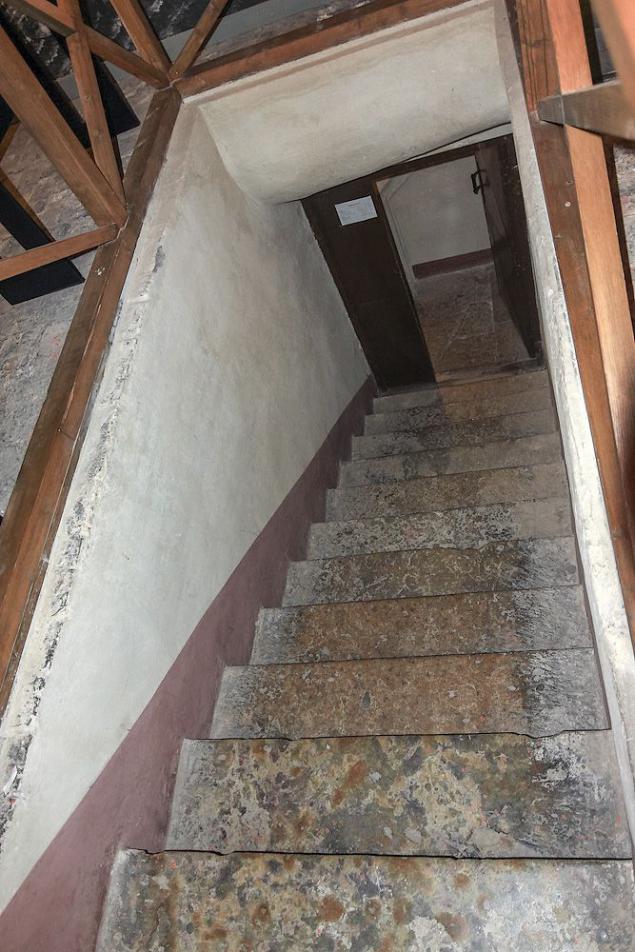
It was during the siege of post defense.
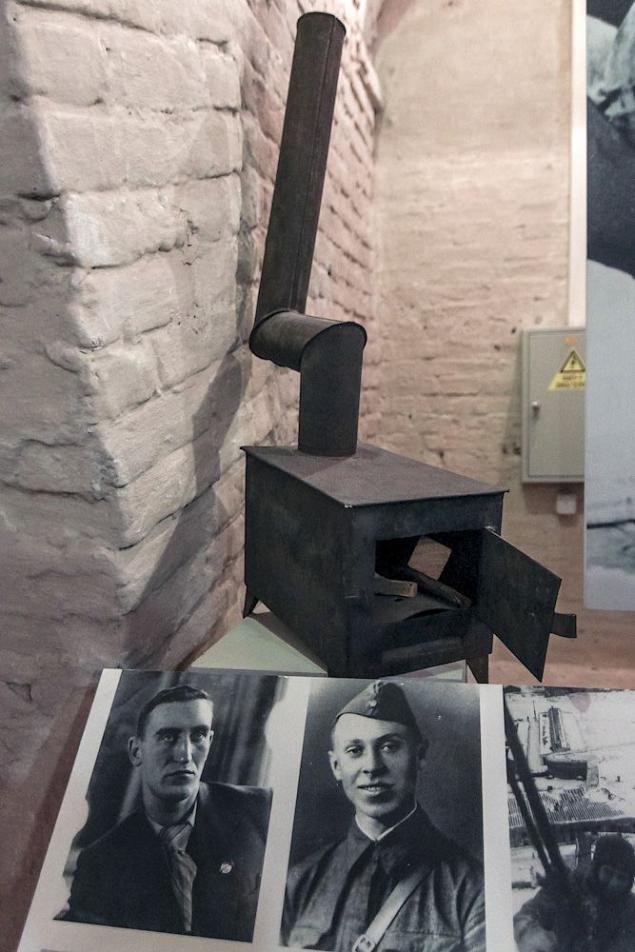
3. Here you can see on the original appearance of the temple. The cathedral was painted in pink tones, the angel on the spire was different.
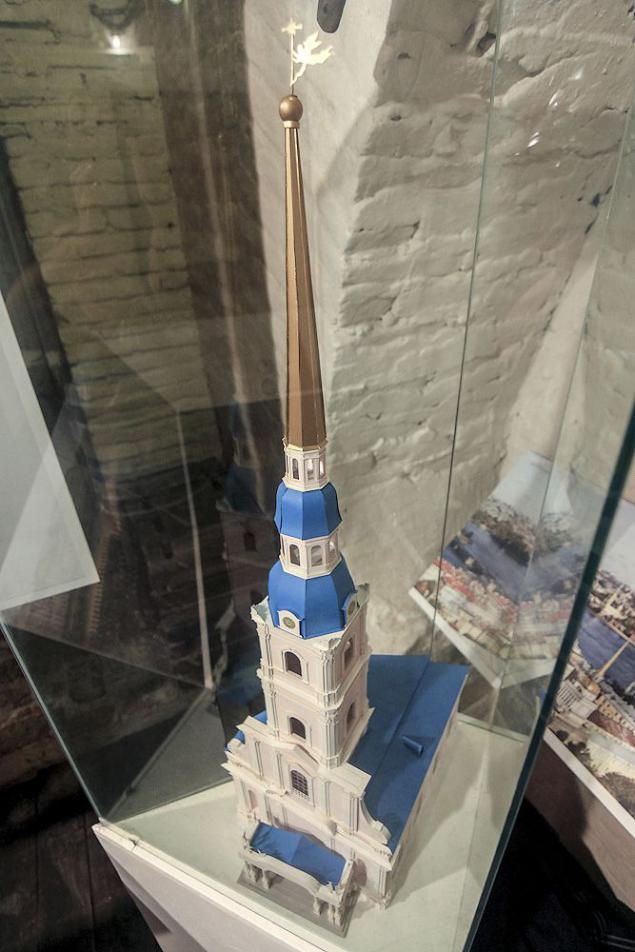
The entrance was decorated with magnificent porch with sculptures.
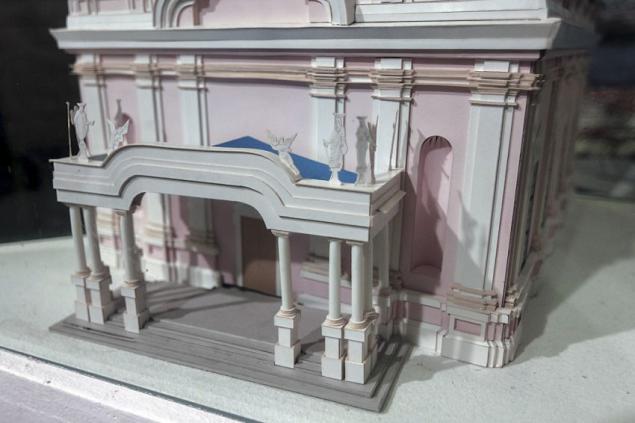
Remember, as the cathedral looks today (photo from Grand layout).
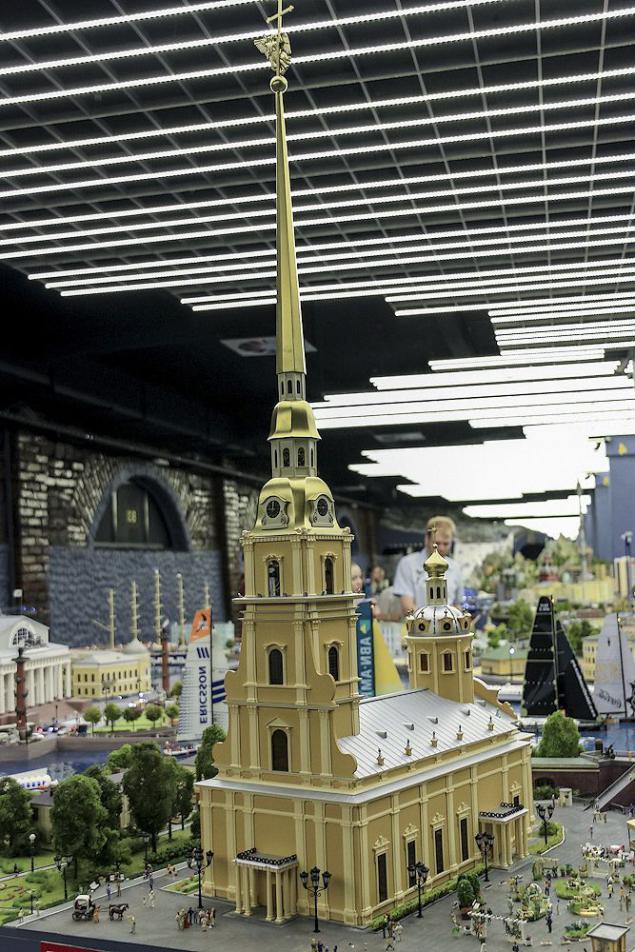
It also presented the framework figure of an angel, is on the steeple since 1858.
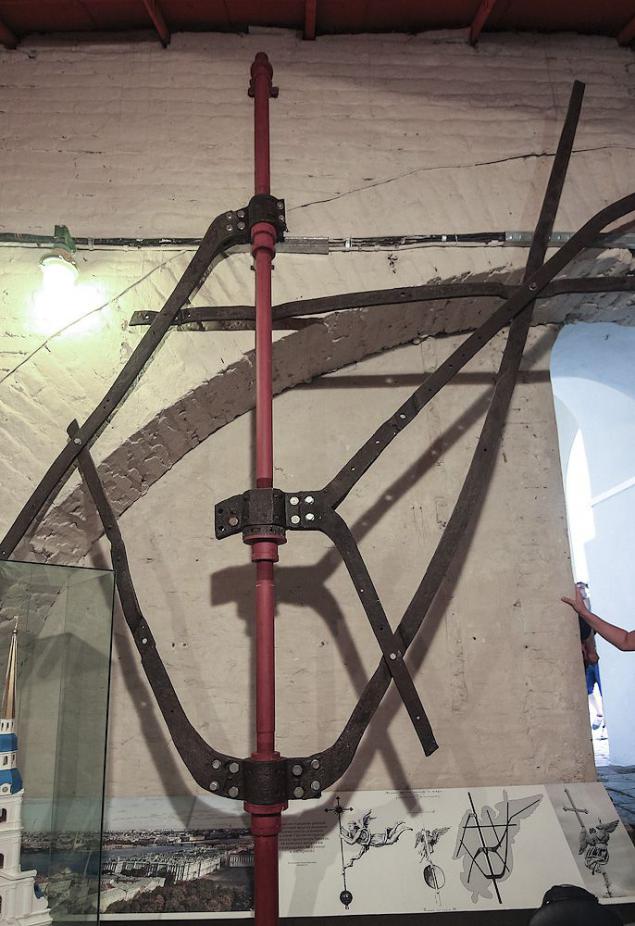
Frame angel was replaced in the late XX century modern.
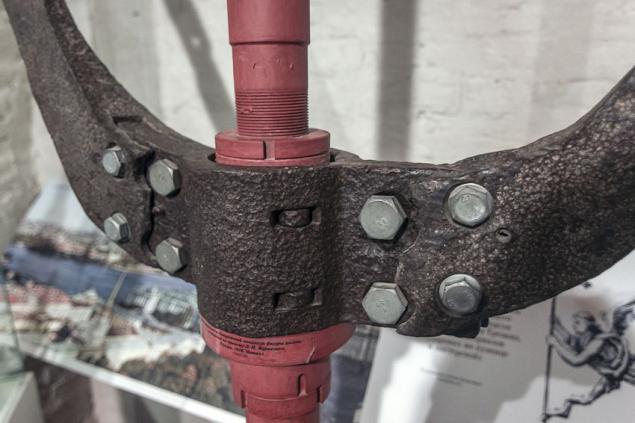
Copper figure is on the steeple until 1858, it is in the museum of history of the fortress. It was replaced with the rebuilding of the spire of the cathedral of metal, because until 1858 the steeple was wooden.
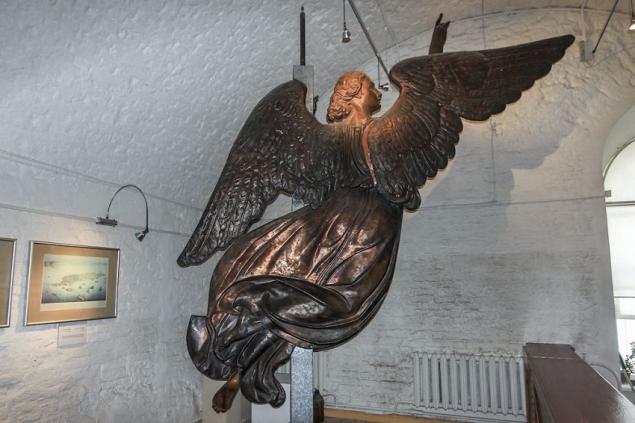
The current figure weathervane was renovated and re-gilded in 1995.
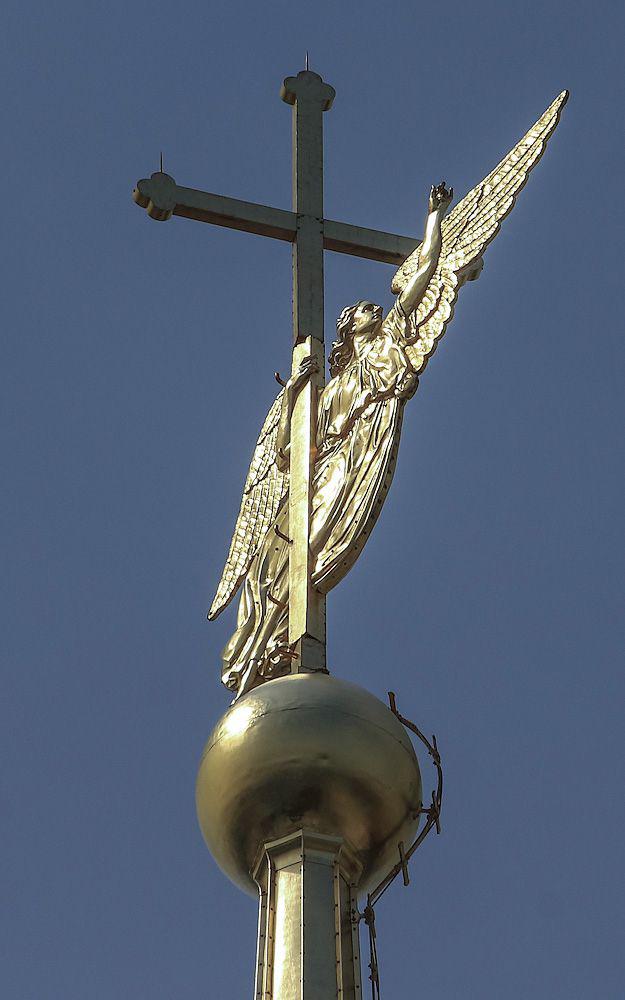
From the very beginning of this tier belfry. Below collected loads mechanism old clock tower, chimes.
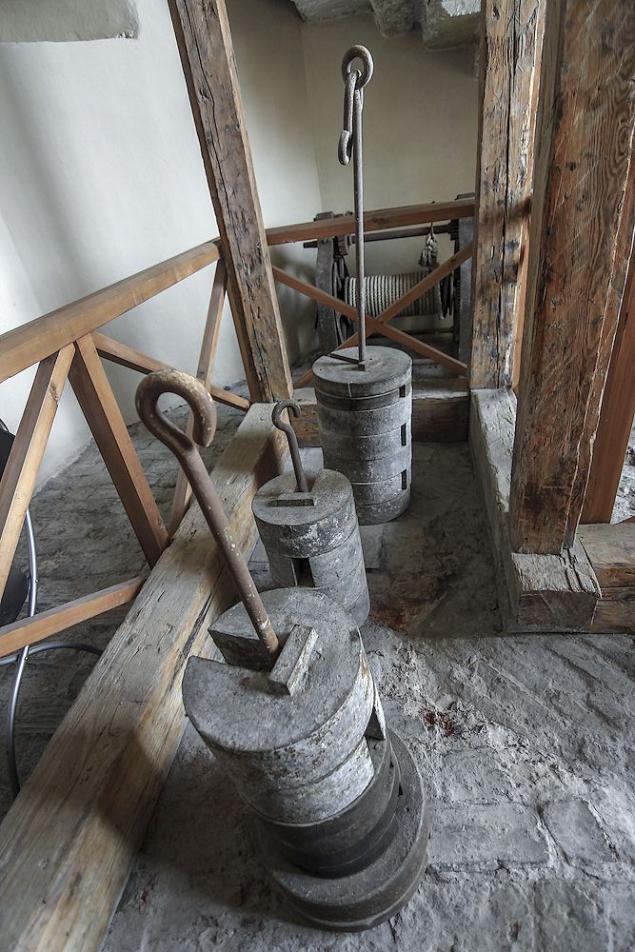
And here's this old winch.
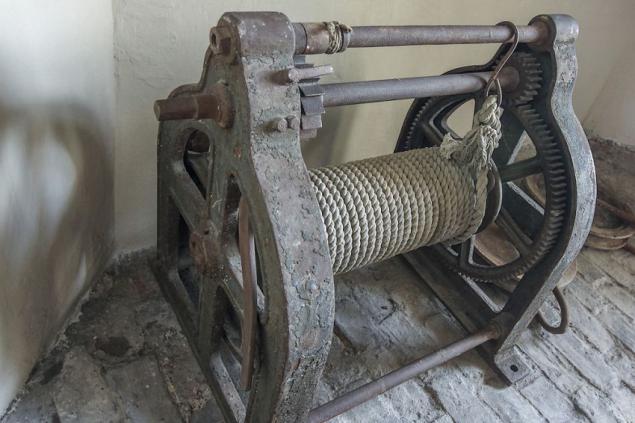
The locking mechanism on the door leading to the open area of the cathedral.
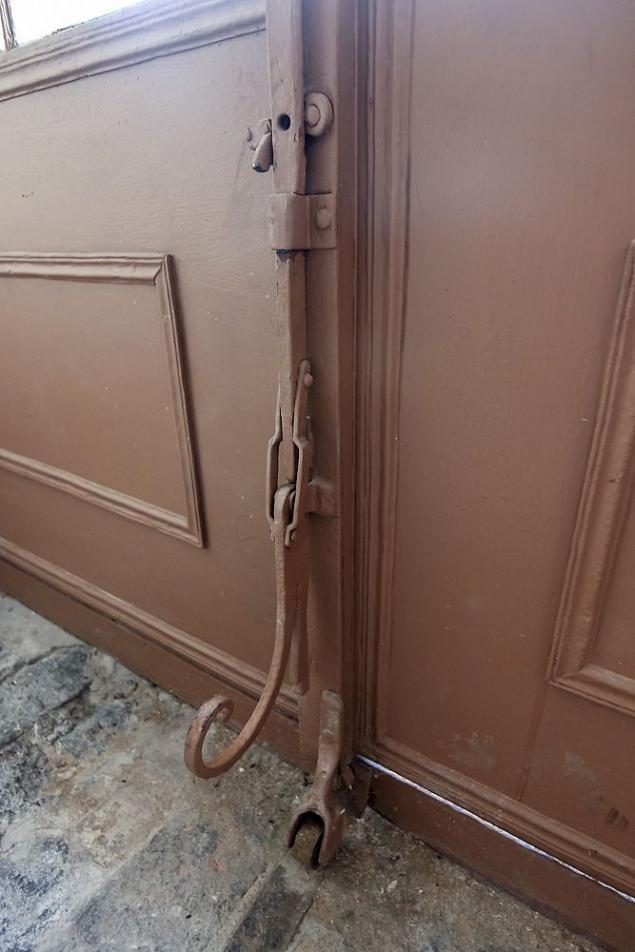
On the stone steps climb higher.
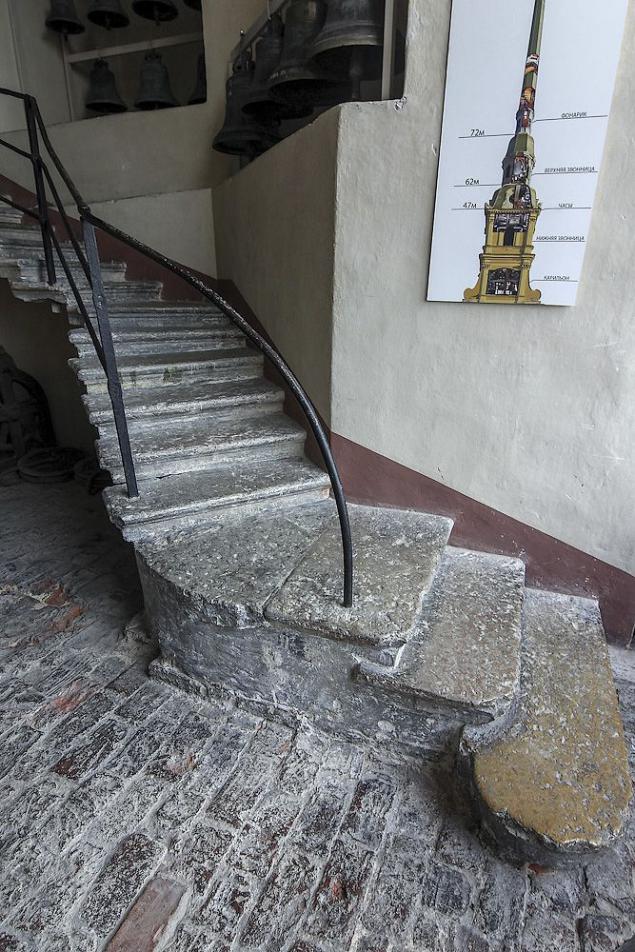
In the bulk of the cathedral towers installed carillon.
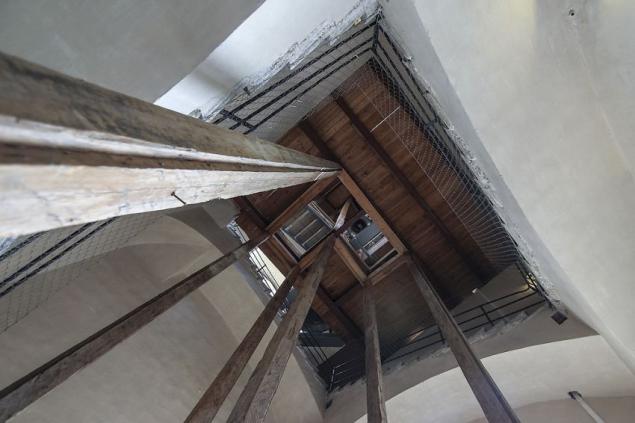
Carillon - it's impressive size vociferous bell musical instrument, originally from Belgium. By the way, "crimson bells" so named not for the sweetness of the sound, and in honor of the Belgian city of Malines.
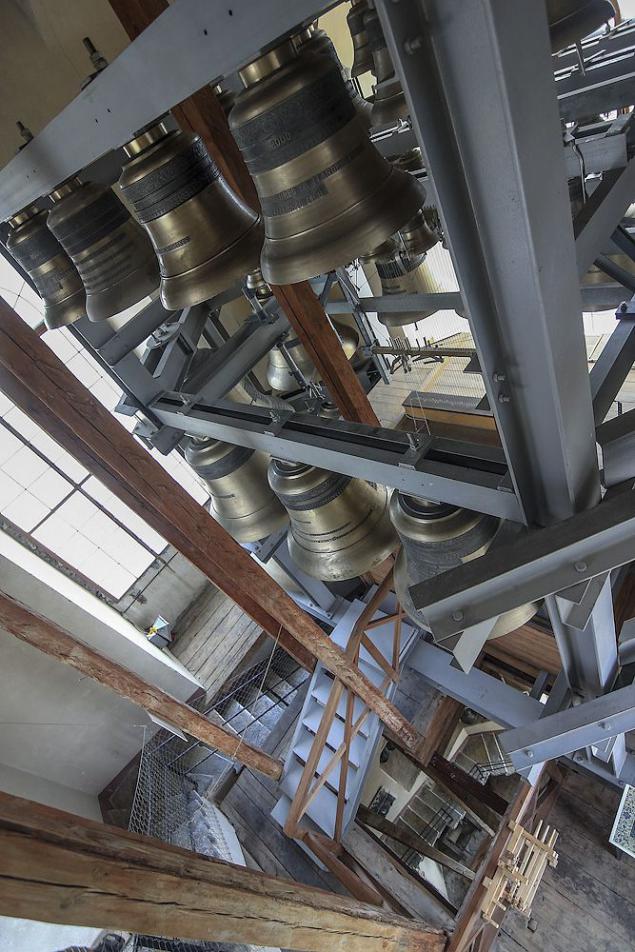
Initially, the carillon was brought and installed in the Peter and Paul Cathedral Peter I, but later destroyed in the fire, but was restored in our time.
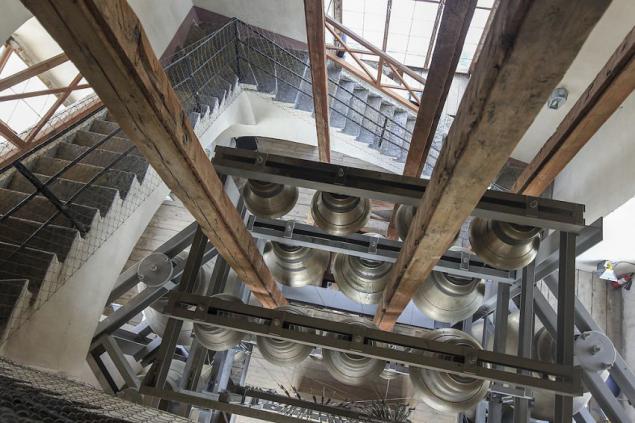
The tool consists of a plurality of fixed the bells of different sizes.
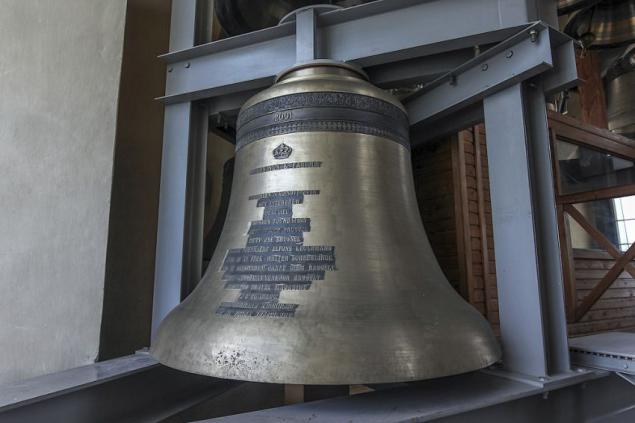
Clapper can be controlled by means of steel cables.
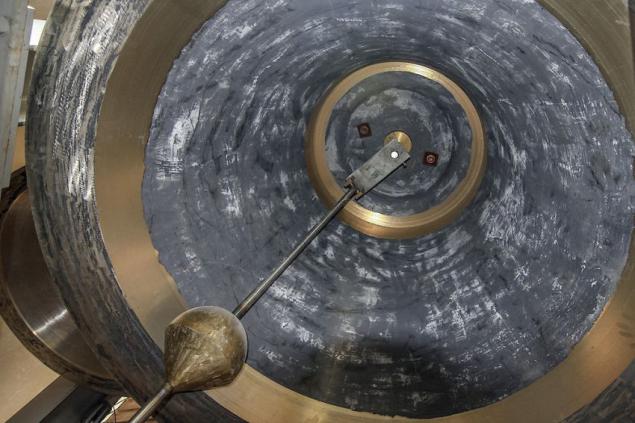
Playing the carillon should be here with the remote. Teacher playing the instrument, despite the "bearded," the Russian said with a heavy accent, he is clearly somewhere in Belgium.
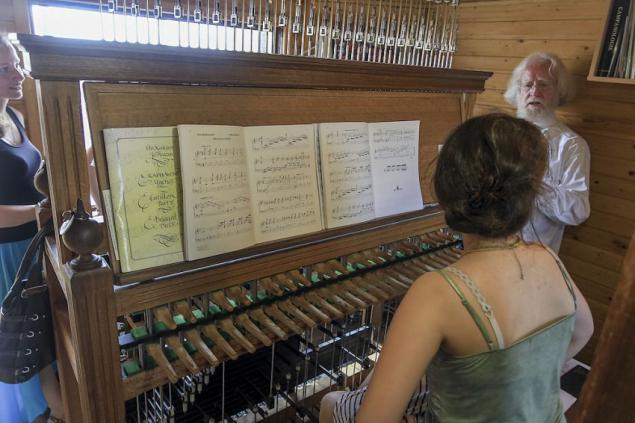
Above the lower belfry carillon is traditional for Orthodox churches.
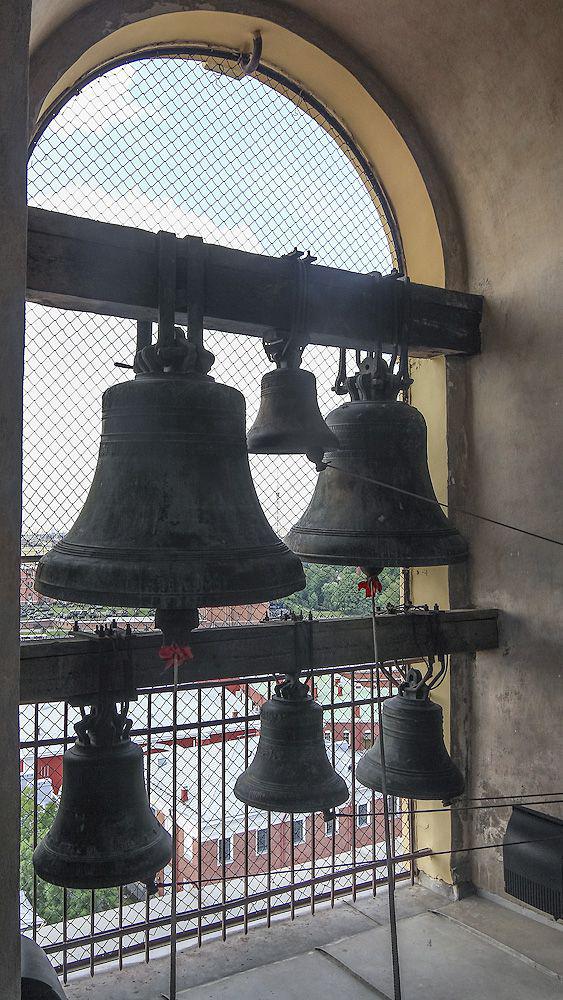
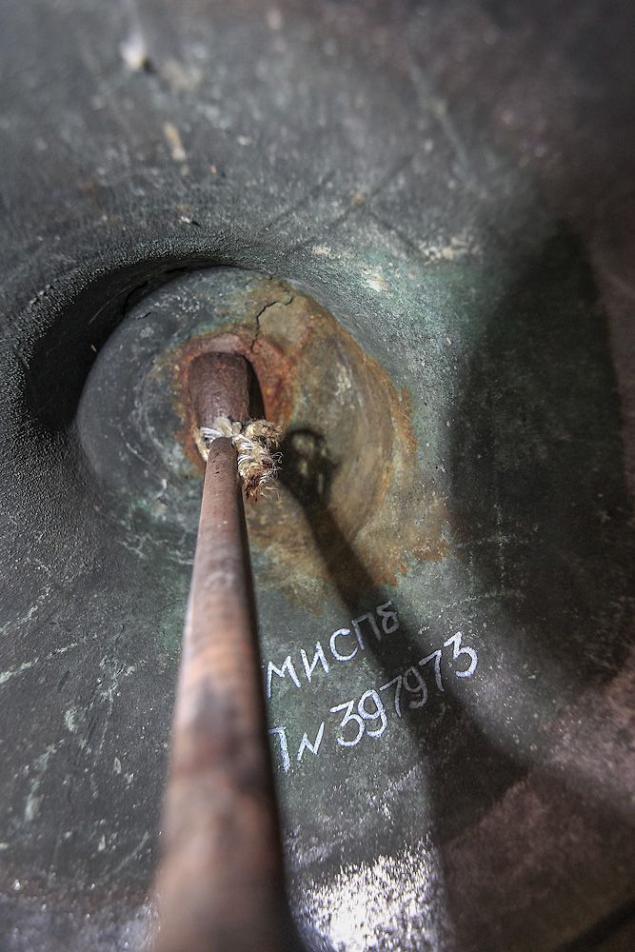
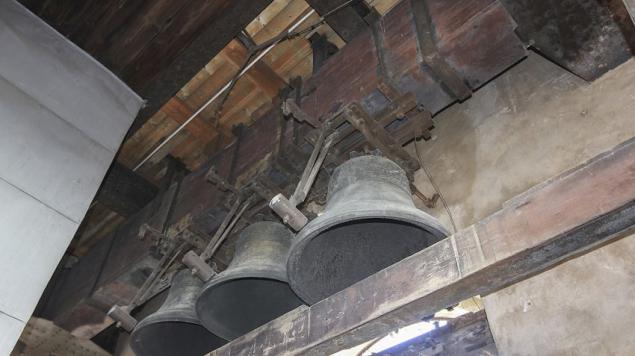
. The largest bell, more than a meter in diameter.
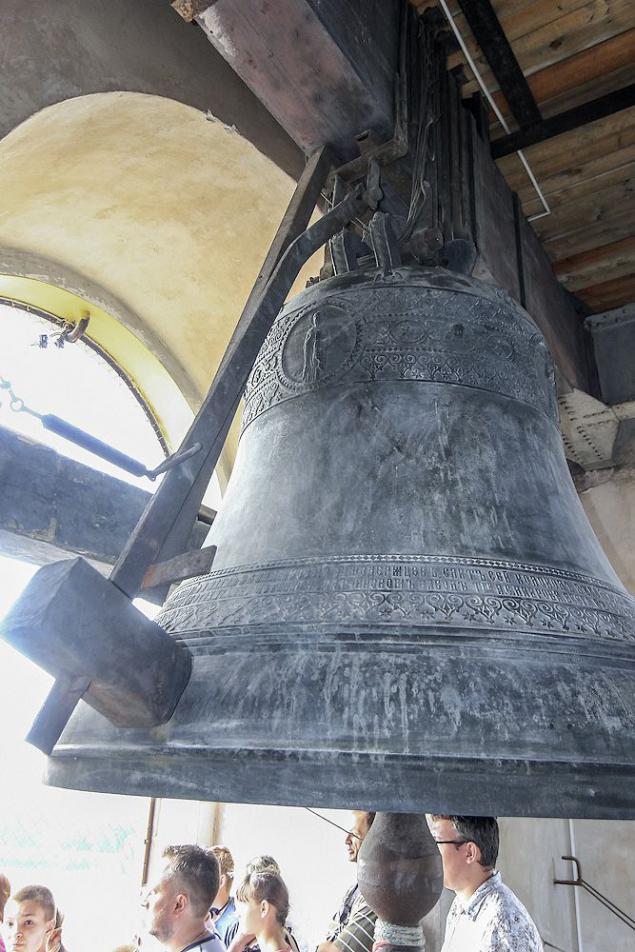
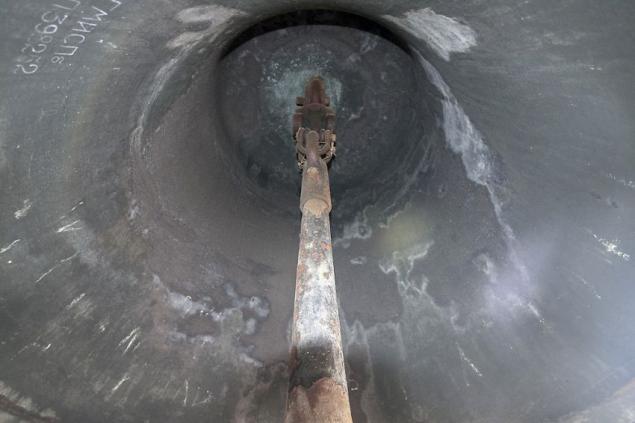
Ringing in the bell quite traditional - with the help of ropes tied to the language.
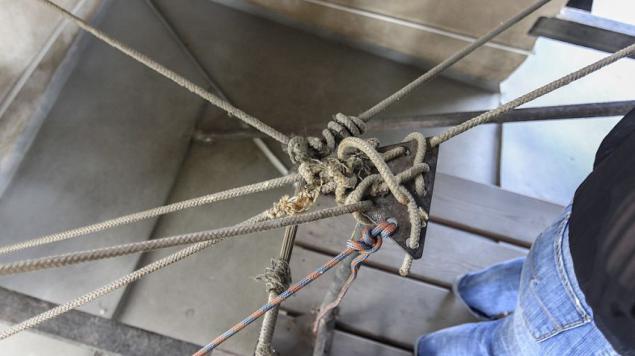
Here hang loads tiered higher clock-chimes.
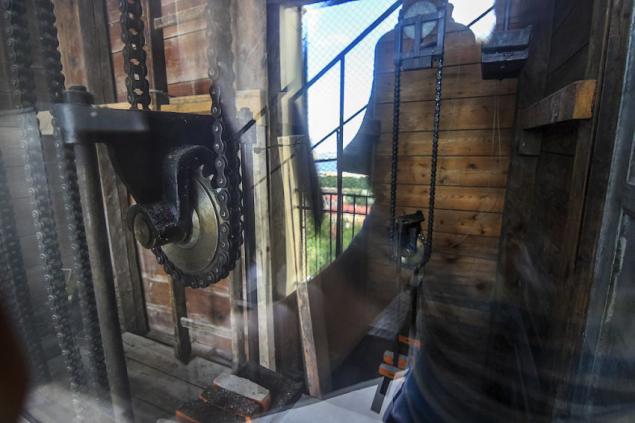
The tour is not designed to rise above the bottom of the belfry, so at the end of two frames with sorokametrovoy height.
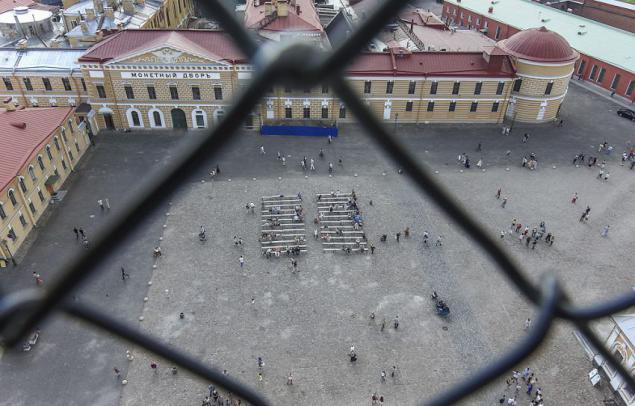
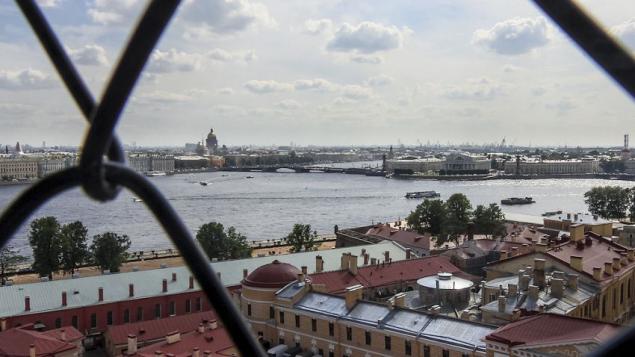
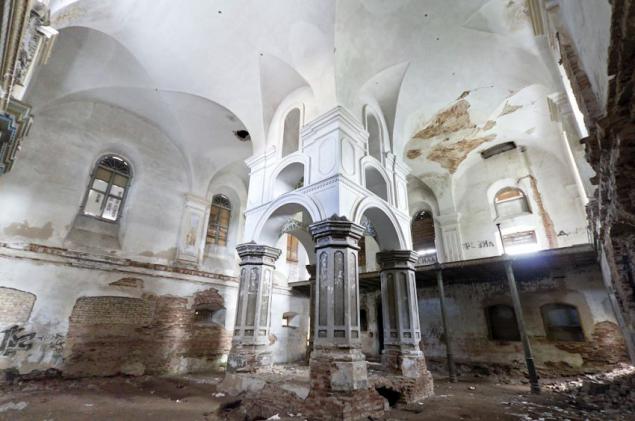
Source: deletant.livejournal.com

From the outset, the cathedral is the burial place of the Romanovs and their relatives. In 1896, the building was erected next to the tomb of the great princes of the imperial family, and His Serene Highness Prince Romanov. This from the cathedral eight graves were moved.

. Princely tomb was badly damaged during the Soviet era, many years repaired and is still closed to visitors.

With its cathedral connects white corridor. As you can see, here everything is ready, but the passage is closed.

Will visit the interior of the nave of the cathedral.

The main entrance to the temple from the Cathedral Square.

The ceiling is decorated with paintings from the Gospels.

REDD suspended magnificent chandeliers.

The pulpit, decorated with gilded sculpture.

Gilded carved iconostasis of the cathedral in Moscow produced the drawings Trezzini.

Before iconostasis are buried emperors and empresses of the XVIII century.

From left in the front row - the burial of Peter I, crowned by the bust of the king. Next to him - Catherine I (March Skavronskaya), his wife. Left - Elizabeth, their daughter, prudently titled plate "Elizabeth I» in case there would be empresses among other Elizabeth. For Peter I I am his niece Anna Ivanovna, the daughter of Tsar Ivan V. left in the second row - Catherine II and Peter III, moved after his wife died of Alexander Nevsky Lavra. On their tombstones is one and the same date of burial, which creates the illusion that they were living together and died in one day.

. Peter the Great signed on as the "Father of the Fatherland." When he died in 1725, the walls of the cathedral almost climbed the height of a man, and his body lay until 1731 in a temporary wooden chapel.

On the other side of the holy gates as two rows of tombstones are of Paul I and Maria Feodorovna, Alexander I and Elizabeth Alexeevna, Nicholas I and Alexandra Feodorovna, and the daughter of Peter I, Grand Duchess Anna.

. All black tombstone fenced fences topped with knobs in the form of vases, covered with mourning cloth. Tombstones spouses delineated a single fence.

All the tombstones were in 1865 replaced by marble, and is now available, but the two are different from the rest of the sarcophagus. They were made in the years 1887-1906 of green jasper and pink rhodonite for Tsar Alexander II and his wife Maria Alexandrovna.

All marble tombstones covered with gilded crosses in the corners decorated with the imperial double-headed eagles. One of the other gravestones clearly fresh.

It is delivered over the burial of the Empress Maria Feodorovna (Princess Dagmar), the wife of Alexander III. Deceased in 1928, the empress was buried next to his parents in the crypt of the Cathedral of the Danish town of Roskilde. In 2006, her ashes were taken by ship to St. Petersburg and was buried next to her husband.

And in 1998, in the Cathedral of St. Catherine's chapel laid to rest the remains of the last emperor Nicholas II, Empress Alexandra Feodorovna and their daughters Tatiana, Olga and Anastasia.

But the very first burial in the cathedral can be seen only on guided tours of the bell tower of the Cathedral, which had built during the life of Peter the Great. Here, under the stairs, are the graves of the princess Maria Alexeyevna, sister of Peter I, and his son Alexei Petrovich with his wife, Princess Charlotte Christine of Brunswick-Lüneburg Sophia.

By peeling off the stairs rise to the lower level of the bell tower, located flush with the roof of the cathedral.

It was during the siege of post defense.

3. Here you can see on the original appearance of the temple. The cathedral was painted in pink tones, the angel on the spire was different.

The entrance was decorated with magnificent porch with sculptures.

Remember, as the cathedral looks today (photo from Grand layout).

It also presented the framework figure of an angel, is on the steeple since 1858.

Frame angel was replaced in the late XX century modern.

Copper figure is on the steeple until 1858, it is in the museum of history of the fortress. It was replaced with the rebuilding of the spire of the cathedral of metal, because until 1858 the steeple was wooden.

The current figure weathervane was renovated and re-gilded in 1995.

From the very beginning of this tier belfry. Below collected loads mechanism old clock tower, chimes.

And here's this old winch.

The locking mechanism on the door leading to the open area of the cathedral.

On the stone steps climb higher.

In the bulk of the cathedral towers installed carillon.

Carillon - it's impressive size vociferous bell musical instrument, originally from Belgium. By the way, "crimson bells" so named not for the sweetness of the sound, and in honor of the Belgian city of Malines.

Initially, the carillon was brought and installed in the Peter and Paul Cathedral Peter I, but later destroyed in the fire, but was restored in our time.

The tool consists of a plurality of fixed the bells of different sizes.

Clapper can be controlled by means of steel cables.

Playing the carillon should be here with the remote. Teacher playing the instrument, despite the "bearded," the Russian said with a heavy accent, he is clearly somewhere in Belgium.

Above the lower belfry carillon is traditional for Orthodox churches.



. The largest bell, more than a meter in diameter.


Ringing in the bell quite traditional - with the help of ropes tied to the language.

Here hang loads tiered higher clock-chimes.

The tour is not designed to rise above the bottom of the belfry, so at the end of two frames with sorokametrovoy height.



Source: deletant.livejournal.com





